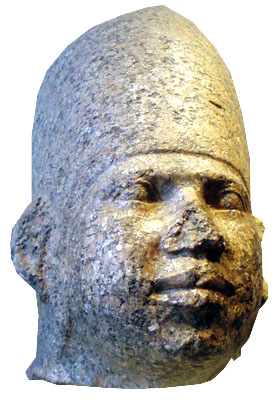@Canadadry why are there no blonde straight haired, blue eyed, white skinned nordic looking populations native to africa?
It's Natural selection they are not "native" to europe but rather an extension of africa. The results concluded that the ancestral gene is came from Africa. You guys are focusing to much on the superficial. You guys are trying to frame it and say blue eyed white skin people were coming out of Africa that is NOT what i am arguing at all. Rather the origin of those genes come from Africa. They were not how they looked now, however the origin came from Africa. Through selective mating they came to be the way they are and africans the way they are.
I'll post up this bit that explains how ( they explain it very well.), then post up some points from the study. To better help you understand.
Bringing Hidden Traits Out
"As anyone who looks around knows, people all look pretty different. For the most part, these differences are there because we are all different genetically.
Now this doesn't mean we all have different genes. As humans we all share the same set of genes.
What makes each of us different is that we can have different versions of these same genes.
This explains why we're all different. But it doesn't do a very good job of explaining how, for example, t
wo darker skinned parents can have a lighter skinned child.
To understand this, we need to remember that we have
two copies of each of our genes -- one from mom and one from dad. What this means is that the same person can have copies of different gene versions.
For example, there is a skin color gene called
SLC24A5. This gene comes in two different versions, dark (D) and light (L).
People with two dark versions (DD) tend to be much darker than people with two light versions (LL). People with a copy of each (DL) tend to be in between.
Imagine that two DL parents have a child. The child will get one version of the
SLC24A5 gene from mom and one from dad. Which copy the child gets from each parent is totally random.
So half the time mom will pass a D and half the time an L. Same with dad.
This works out to each child having a 1 in 4 chance of getting two L's and so being much more fair skinned than his or her parents.
That is how Africans can sometimes have a lighter colored child (and, for that matter, a darker one). But now we need to figure out how light colored skin became so common.
The answer lies in something called selection. (meaning lighter skin was favored and sexually selected, while dark skin was not)
Points from studies
1. Not only is the Ancestral (found in Africans) but the Derivative (which many white people have is found in Africans as well.)
"rs1426654-A allele (SLC24A5) in Europe, Middle East, Pakistan, moderate to high frequencies in Northwest and Central Asia, while being almost absent in East Asians and Africans with NOTABLE EXCEPTIONS in Bantu (Southwest), San, Mandeka, and Ethiopians"
2."
These results suggest that an APBA2 (OCA2) mutation conferring light skin arose BEFORE the spread of humans out of Africa"
They concluded that there is NOT a direct correlation between so called “European” admixture and light skin in Cape Verdeans. ( they did a study on cape verdeans and concluded that the light skin they have was not from european admixture.)
3. They did the study on other primates, this is creditworthy science, to determine the ancestral (underived) genotype. Concluding that the genes origin is in Africa. Thus their conclusion “light skin originated” BEFORE AMH left Africa.
4.The geneticists suggested that pigmentation always goes back to the OCA2(Albino) gene. This gene is found higher in africans than europeans.
The OCA2 gene, homologous to the mouse pink-eye dilute locus, is located on chromosome 15 and downstream of the HERC locus. The regulation of its expression has been proposed to exert the strongest influence on iris color [3], as well as having associations with skin and hair color [46] in European-derived populations. The OCA2 protein is thought to be a mature melanosomal membrane protein [63], with a potential role in trafficking other proteins to melanosomes [64]. The key determinant SNP rs12913832*T/C for the regulation of OCA2 expression is located in a short
(HERC2 is the blue eyed gene BTW) There many ways you can receive dark skin(melanin) any blocking of this and it will produce light skin.
5.While TYR catalyses the key initial step in melanin production, TYRP1 and DCT (TYRP2) act at subsequent steps, influencing the quantity and the quality of melanins and stabilizing the TYR enzyme. They also have some function in melanocyte survival after ultraviolet radiation (UVR) stress and in the maintenance of melanosomal structures.
The TYRP gene family evolved by recurrent gene duplication from a common ancestral TYR early in evolution giving rise to TYRP1 and DCT [80]. In humans, mutations of TYRP1 causing OCA3 are frequently observed in South Africa [13]. Part of this phenotype is red bronze skin, ginger-red hair and blue irides. In a surprising finding, it was recently reported that a nonsynonymous amino acid change,
Arg93Cys, in the TYRP1 protein is a major determinant of the blonde hair phenotype.
(South Africans are getting these genes with no admixture. )
6.A
lthough ecological and environmental factors may be sufficient to explain the observed change in European skin pigmentation, these explanations are unlikely to hold for eye and hair color. The geographic distribution of iris and hair pigmentation variation does not conform as well to a latitudinal cline model, with much of the observed phenotypic variation restricted to Europe and closely related neighboring populations (51, 52) (these means study are showing that it was unlikely that environment turned their eyes blue and hair blonde. ) So what turned it this way?
It is possible that depigmented irises or the various human hair color morphs in Europeans are by-products of selection on skin pigmentation.
(In the European population TYRP1 rs1408799*A has been associated with blue eye color [24,25], though other SNPs are also associated with blue eyes [49,83], so the causative SNP is yet to be recognized.)
(why is it this same gene being found in South Africa ? )
I'll post up more points. 




 Idk, maybe it was apart of the culture or something.
Idk, maybe it was apart of the culture or something. maybe she just didn't grow hair. Do you know if she had any diseases?
maybe she just didn't grow hair. Do you know if she had any diseases?
 Why would you give up...I thought you were Kemet and keeping faith in the Egyptian gods.
Why would you give up...I thought you were Kemet and keeping faith in the Egyptian gods.




 )
)